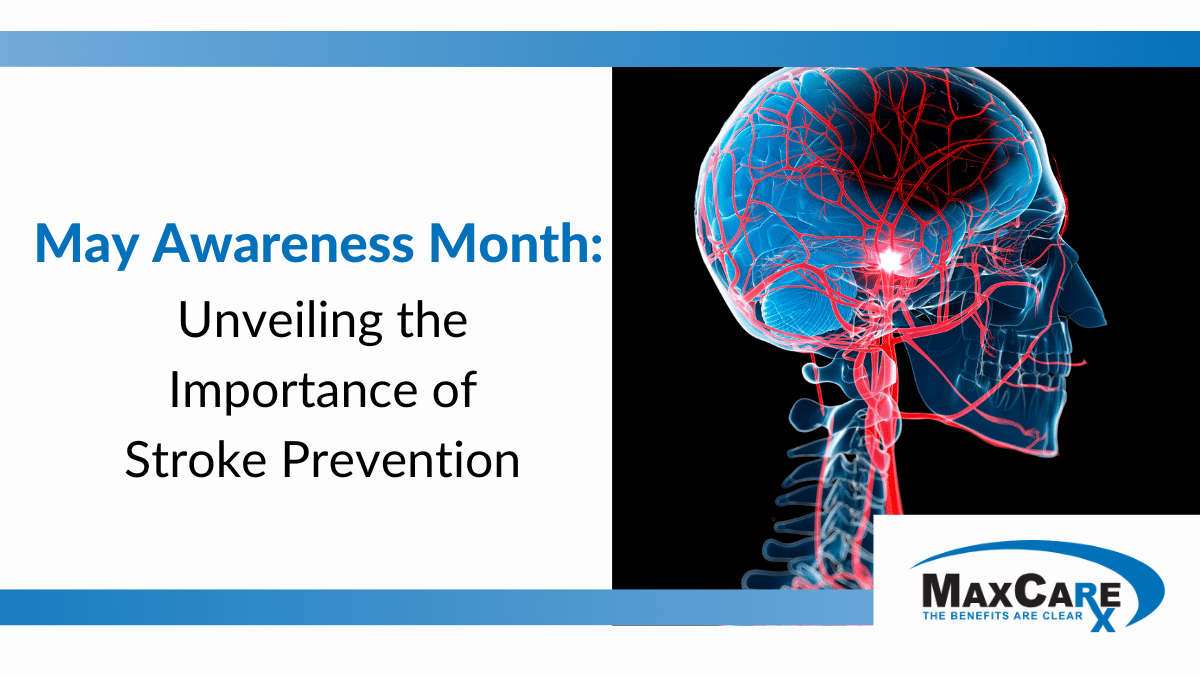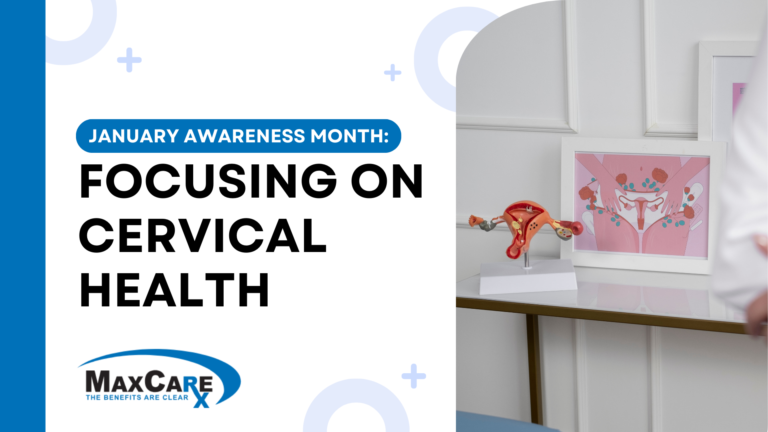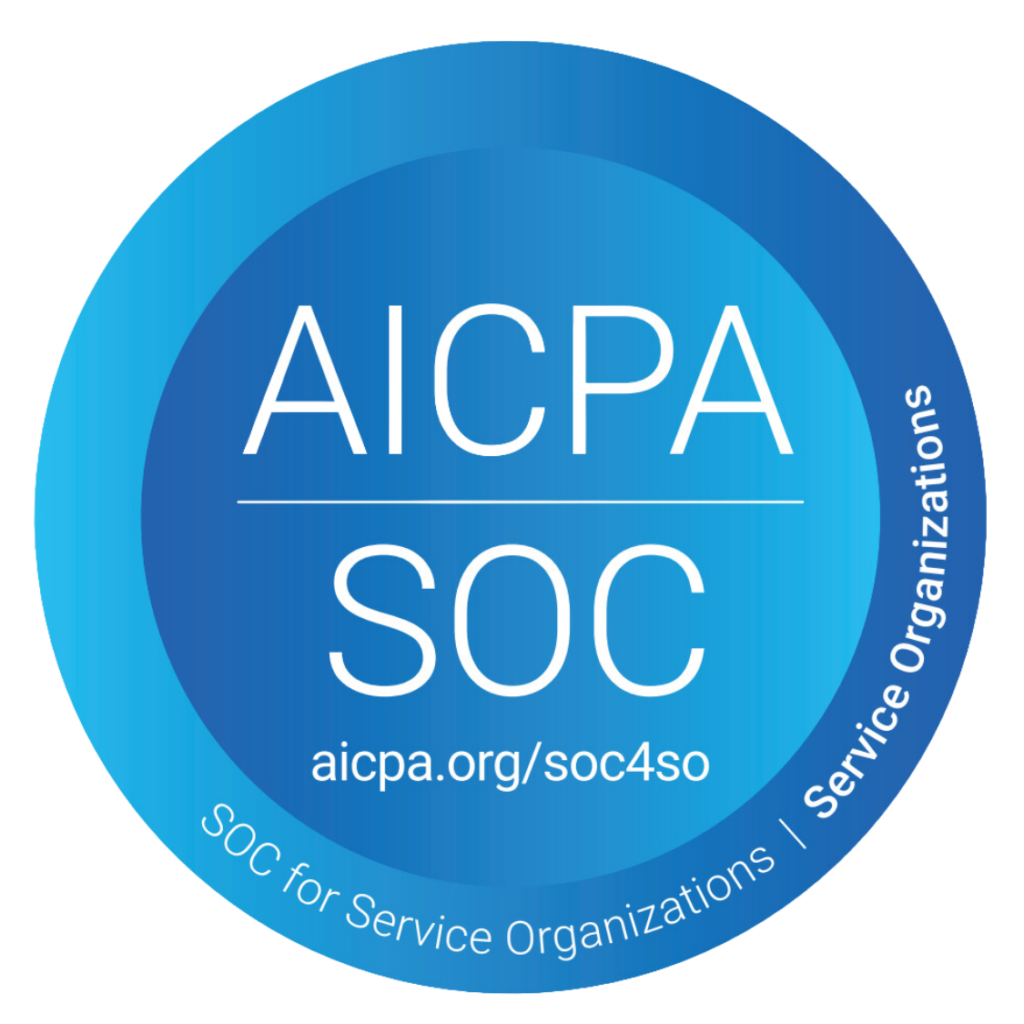May is an important month dedicated to raising awareness about stroke prevention, recognition, and treatment. This observance serves as a reminder of the importance of understanding strokes, their symptoms, and the immediate actions needed when signs are observed. By being informed and proactive, individuals can play a key role in identifying strokes promptly and seeking timely medical assistance to reduce long-term effects.
Understanding Strokes
A stroke is a medical emergency that happens when something goes wrong with the blood flow to your brain. It occurs in different ways, but the result is the same – part of your brain doesn’t get enough oxygen and nutrients. Just like your body needs food and air, your brain also needs a constant supply of blood to work properly. There are three types of strokes:
Hemorrhagic Stroke
Hemorrhagic strokes occur when a weakened blood vessel in the brain ruptures, leading to bleeding within or around the brain. This bleeding can exert pressure on brain tissue, disrupting normal blood flow and causing damage to surrounding cells.
Ischemic Stroke
Ischemic strokes account for the majority of stroke cases and occur when a blood clot or plaque blocks a blood vessel that supplies blood to the brain. The blockage restricts blood flow, depriving brain cells of oxygen and nutrients.
1. Transient Ischemic Attack (TIA)
Transient ischemic attacks, or mini-strokes, are brief episodes of neurological dysfunction caused by a temporary disruption of blood flow to the brain. While TIAs are transient and typically resolve within minutes to hours, they are warning signs of an increased risk of a full-blown stroke.
Recognizing the Signs of a Stroke
Time is crucial when dealing with a stroke because getting prompt treatment can help minimize the damage and improve the chances of recovery. To aid in the rapid identification of stroke symptoms, the well-known acronym F.A.S.T. serves as a helpful reminder of key indicators to look out for.
Face
Signs of Facial Drooping: When a person experiences facial drooping, it may appear uneven when they attempt to smile. Observing asymmetry in the face can be an early indicator of a stroke, signaling potential nerve damage or impaired muscle control.
Check if one side of their face droops when they smile. Ask them to smile and observe if their smile is uneven or drooping on one side.
Arms
Arm Weakness or Drifting: In the context of stroke, individuals may experience difficulty lifting one or both arms, leading to one arm drifting downward or feeling unusually heavy or numb. This loss of strength or coordination in the arms can signal an interruption in brain function and the need for immediate medical attention.
See if one arm drifts downward or is weak when both arms are raised. Have them raise both arms and note if one arm drifts down, feels weak, or is difficult to move.
Speech
Slurred Speech or Difficulty Speaking: Slurred speech, difficulty articulating words, or sudden onset language problems are red flags that should not be ignored. Observers should listen carefully for any changes in speech clarity, coherence, or fluency, as these can indicate a neurological issue, such as a stroke.
Listen for slurred speech or difficulty speaking. Ask them to repeat a simple sentence. Pay attention to any difficulties in speech or trouble forming words clearly.
Time
Act Quickly and Call Emergency Services: If any of the F.A.S.T. symptoms are present or suspected, it is crucial to act swiftly and call emergency services immediately. Stroke is a medical emergency that requires urgent evaluation and treatment to minimize potential brain damage and optimize recovery outcomes. Remember, every minute counts in the event of a stroke, and swift action can make a significant difference in the patient’s prognosis.
Preventing Strokes: Risk Factors, Demographics, and Lifestyle Modifications
Stroke prevention is a critical aspect of overall health and well-being. Understanding the risk factors, demographics, and lifestyle modifications that can influence stroke occurrence, individuals can proactively take steps to reduce their risk and promote a healthier lifestyle.
Demographics at Higher Risk
Certain demographics are more vulnerable to experiencing strokes due to various factors. Recognizing these demographics can help in targeted prevention efforts and early intervention. Individuals who fall into these categories should be especially vigilant about their stroke risk:
- Older Adults: Advancing age is a primary risk factor for strokes. Older adults, particularly those over 55, should be proactive in managing their health and monitoring any potential risk factors.
- Individuals with High Blood Pressure or High Cholesterol: Hypertension is a common risk factor for strokes, making individuals with high blood pressure more susceptible to stroke incidences. The build-up of fatty plaques in the arteries (atherosclerosis) is a contributor to risk of ischemic stroke.
- Smokers: Tobacco use significantly increases the risk of strokes, making smokers a high-risk demographic. Quitting smoking can substantially reduce this risk over time.
- Family History of Strokes: Those with a family history of strokes should remain vigilant about their cardiovascular health and work with healthcare providers to mitigate their risk through preventive measures.
Lifestyle Modifications for Stroke Prevention
Making positive lifestyle changes can have a profound impact on reducing the risk of strokes and improving overall health. Some key lifestyle modifications include:
- Maintaining a Healthy Diet: Eating a diet rich in fruits, vegetables, whole grains, and lean proteins while limiting saturated fats, cholesterol, and sodium can help control blood pressure and cholesterol levels, reducing the risk of stroke.
- Regular Exercise: Engaging in physical activity, such as brisk walking, jogging, swimming, or cycling, can improve cardiovascular health, enhance circulation, and help maintain a healthy weight, all of which contribute to stroke prevention.
- Managing Stress: Chronic stress can raise blood pressure and contribute to unhealthy habits. Practicing stress-reducing activities like yoga, meditation, mindfulness, or engaging in hobbies can promote emotional well-being and reduce stroke risk.
- Avoiding Smoking and Excessive Alcohol Consumption: Quitting smoking and moderating alcohol intake are crucial steps in stroke prevention. Both habits can negatively impact blood vessels and increase the risk of cardiovascular diseases, including stroke.
Post-Stroke Care and Recovery: Strategies for Rehabilitation
Stroke survivors often face a range of physical, cognitive, and emotional challenges that can impact their daily functioning and overall well-being. Through comprehensive rehabilitation strategies, individuals can work towards regaining independence, improving quality of life, and maximizing their recovery potential.
Physical Therapy
Physical therapy focuses on improving mobility, strength, balance, and coordination. Therapists develop personalized exercise programs to help stroke survivors regain motor skills and relearn movements affected by the stroke. Physical therapy can enhance physical function, reduce muscle stiffness, prevent secondary complications, and promote overall recovery.
Speech Therapy
Speech therapy aids in improving communication skills, swallowing abilities, and cognitive functions. Speech-language pathologists work with individuals to address speech impairments, language difficulties, and swallowing disorders that may arise post-stroke. Speech therapy can enhance verbal communication, promote safe swallowing, and address cognitive deficits related to language and memory.
Occupational Therapy
Occupational therapy focuses on enhancing daily living skills and promoting independence in activities of daily living (ADLs). Occupational therapists assist individuals in developing adaptive strategies, improving fine motor skills, and regaining functional independence in self-care tasks. Occupational therapy can help stroke survivors become more self-sufficient, improve their ability to perform daily tasks, and achieve greater autonomy in their daily lives.
Ongoing Medical Support
The continuum of care post-stroke involves ongoing monitoring, medical management, and support from healthcare professionals. Healthcare teams provide regular assessments, review medications, address complications, and offer guidance on post-stroke recovery and lifestyle modifications. Continual medical support helps optimize recovery, manage secondary health issues, and ensure comprehensive post-stroke care for long-term well-being.
The Role of MaxCare and Community Pharmacists in Stroke Prevention
At MaxCare, our commitment to promoting holistic healthcare solutions extends to advocating for access to essential medications and services that support stroke prevention and recovery. We recognize the crucial role that community pharmacists play in driving positive health outcomes by providing personalized care, medication management, and education on risk factors and lifestyle modifications to prevent strokes.
Community pharmacists serve as frontline healthcare providers who play a pivotal role in delivering patient-centered care and promoting medication safety and adherence. In the context of stroke prevention and recovery, community pharmacists offer a range of valuable services, including:
- Personalized Care: Community pharmacists engage with patients on a personal level, building relationships based on trust and empathy. By understanding individual needs and preferences, pharmacists can tailor their care and support to meet each patient’s specific requirements.
- Medication Management: Pharmacists are experts in medication therapy and can provide guidance on proper drug usage, potential interactions, and side effects. For individuals on stroke-prevention medications or those in the recovery phase, pharmacists play a crucial role in ensuring medication adherence and effectiveness.
- Education on Risk Factors and Lifestyle Modifications: Community pharmacists are well-positioned to educate patients on the modifiable risk factors for strokes, such as hypertension, smoking, and poor diet. Pharmacists can offer guidance on lifestyle modifications, including exercise routines, diet plans, and stress management techniques that can help prevent strokes and support recovery.
Incorporating the expertise and support of community pharmacists into stroke care can lead to more informed decision-making, improved medication management, and better health outcomes for individuals seeking to prevent strokes or recover from stroke-related challenges. At MaxCare, we are dedicated to promoting a patient-centric approach to healthcare that values collaboration, education, and personalized care to support individuals on their health journey.
Medical Disclaimer: This blog post is intended for informational purposes only and should not be considered medical advice. Individuals experiencing symptoms of a stroke or seeking guidance on stroke prevention should consult with healthcare professionals for personalized assessment and recommendations.



